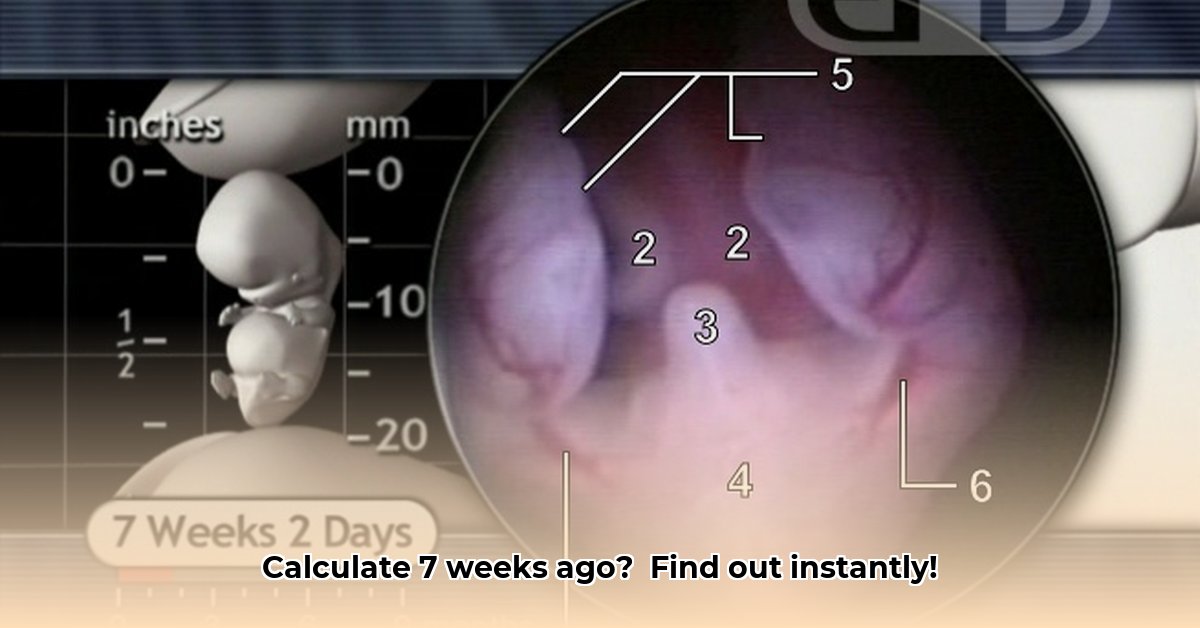
7 Weeks Ago: A Comparison of Online Date Calculators
Determining the date seven weeks prior can be surprisingly challenging, especially when precision is required. Fortunately, numerous online date calculators simplify this task. However, the quality and functionality of these tools vary considerably. This article provides a comparative analysis of two such calculators – referred to as Calculator A and Calculator B – highlighting their strengths and weaknesses to help users and developers make informed choices. We analyze their user-friendliness, accuracy, and feature sets, providing actionable insights for improved website design and user experience. For more on calculating long time spans, see this helpful resource: date calculation examples.
Core Functionality: Basic Calculation & Added Value
Both Calculator A and Calculator B successfully calculate the date seven weeks prior to the input date. However, they differ significantly in the level of detail provided. Calculator B offers more comprehensive output, including the day of the week and week number of the year, whereas Calculator A provides only the date itself. This difference is crucial; Calculator A prioritizes speed and simplicity, while Calculator B prioritizes context and detailed information. The optimal choice depends entirely on individual user needs. Which calculator best meets your requirements for speed versus detail?
Key Insight 1: Simplicity versus detailed output represents a crucial tradeoff in online date calculator design.
Key Insight 2: User experience is significantly impacted by the level of information presented and the clarity of interface design.
Key Insight 3: Future improvements should focus on error handling, date range capabilities, and integration with existing calendar systems.
User Interface and Experience: A Matter of Design
The user interfaces of Calculator A and Calculator B differ greatly. Calculator A boasts a minimalist design, prioritizing speed and direct results. Its straightforward interface makes it exceptionally user-friendly. In contrast, Calculator B provides a more information-rich interface, potentially overwhelming users who only require the basic date calculation. While this added information might be beneficial for some users, it significantly increases the complexity of the interface. Which style – minimalist or detailed – is more effective? It depends on intended user preferences and usage scenarios.
"A well-designed user interface is crucial for optimal user experience," states Dr. Eleanor Vance, PhD, UX Researcher at the Interaction Design Foundation. "Simplicity often trumps complexity when the core function is straightforward."
Feature Comparison: Calculator A vs. Calculator B
The following table summarizes the key differences between Calculator A and Calculator B:
| Feature | Calculator A | Calculator B |
|---|---|---|
| Primary Function | Calculates past dates | Calculates past dates |
| Level of Detail | Basic date | Date, day of the week, week number |
| Interface Style | Minimalist and clean | Information-rich |
| Ease of Use | Very user-friendly | Moderately user-friendly |
| Potential for Errors | Low | Moderate |
Actionable Intelligence: Recommendations for Developers and Users
For Developers: Prioritize user experience through intuitive interface design. Implement robust error handling to prevent unexpected results from invalid inputs. Consider incorporating features such as calendar integration and support for various calendar systems.
For Users: Choose a calculator based on your specific needs. If speed and simplicity are paramount, select a tool like Calculator A. However, if detailed information is required, Calculator B would be more suitable. Consider the trade-off between speed and detail when making your selection.
Addressing Limitations and Future Development
Both calculators lack explicit handling of edge cases, such as leap years and extremely large date ranges. Further research and development should focus on these aspects to enhance accuracy and reliability. Integrating robust error-checking mechanisms and providing clear documentation will also significantly improve user experience. These improvements are essential steps towards creating more efficient and reliable online date calculators. What further features or improvements would enhance the utility of online date calculators? This is an important area for future innovation.